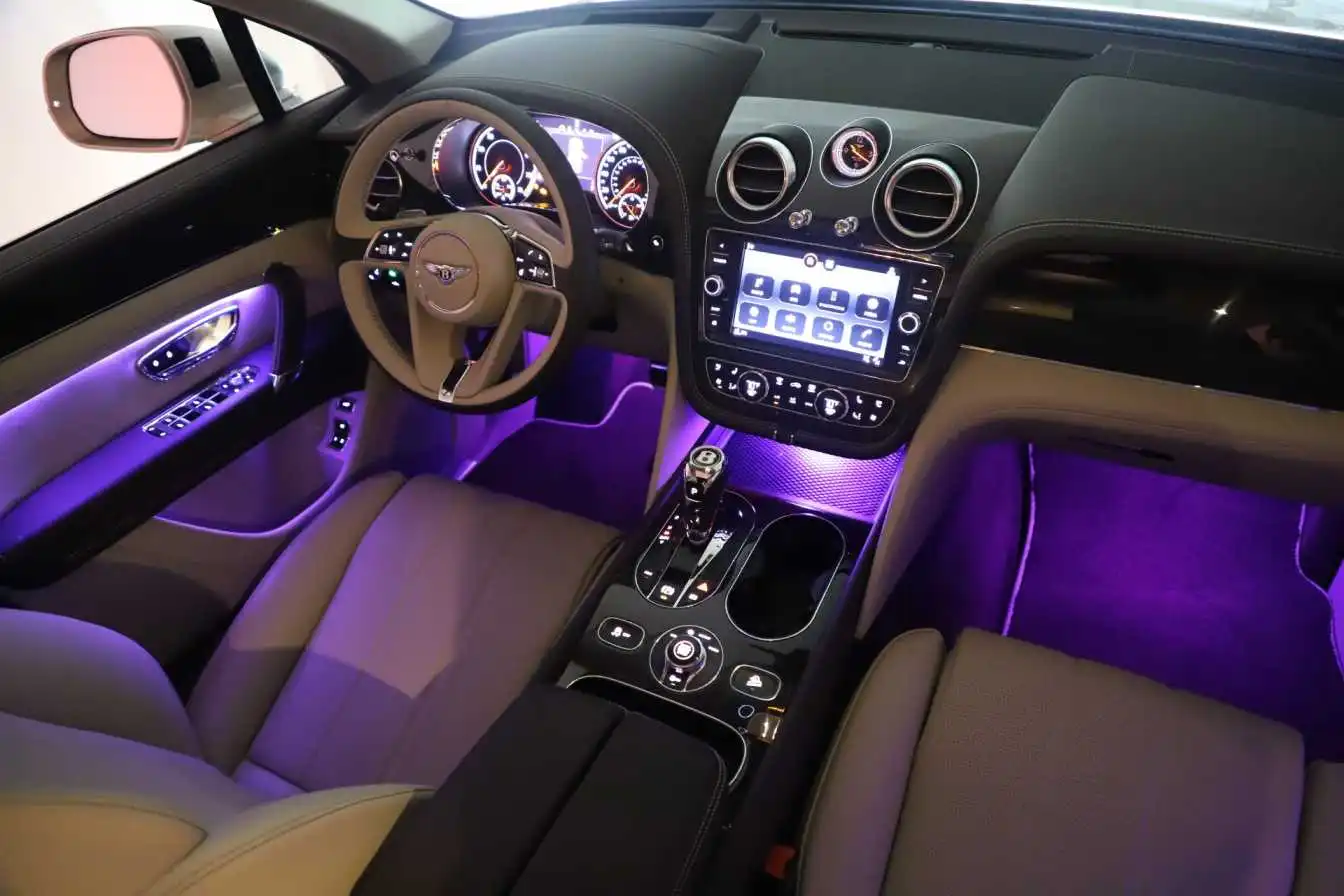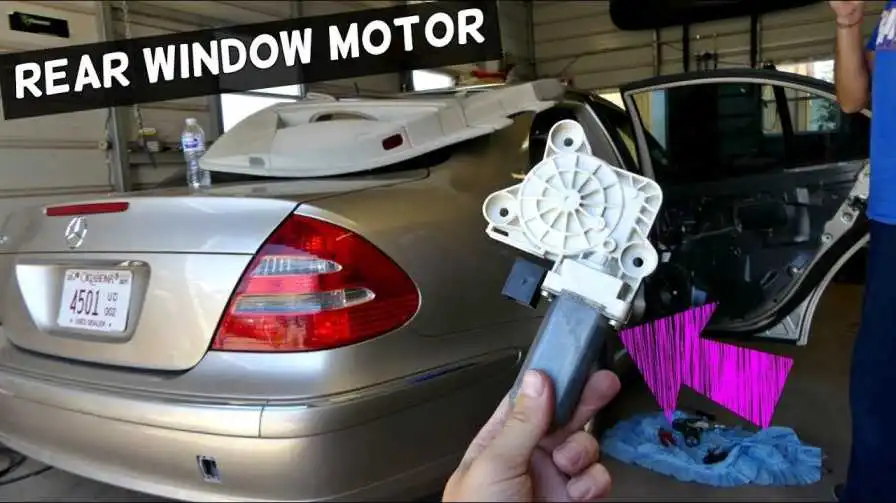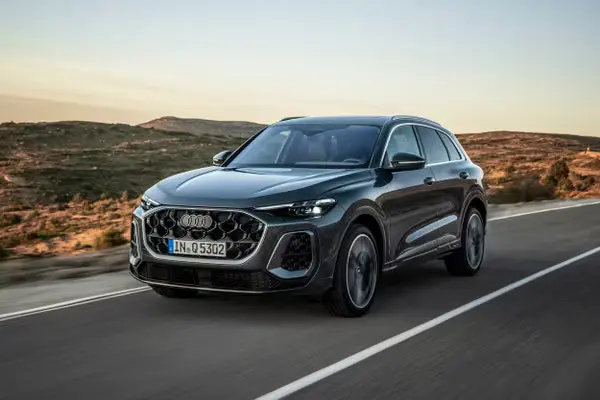BMW S54 Engine Guide
I don’t know well-nigh you, but when someone says “M3,” I’m immediately taken when to the early 2000s. The E46 M3 is one of the most recognizable, and celebrated, BMWs of all time. In quite a few enthusiasts’ eyes, the E46 M3 condenses the essence of BMW’s M-division into a tight, driver-focused package, arguably largest than any M3 that came surpassing it or without it.
While the E46 M3 is stuffed-up of characteristics that make it a golden child in the BMW M lineup, the real star of the show is the 3.2L S54 straight-6 engine that powers it. Often considered one of the weightier straight-6 engines of all time, the S54 engine helped glue BMW’s inline-6 legacy plane further. As is typical with other BMW performance engines, the S54 shares very few components with the M54 engine found in standard E46 models. Instead, it has increasingly in worldwide with the S50 straight-6 found in the previous generation E36 M3.
The S54 is praised for quite a few reasons. As is the specimen with many of BMWs other straight-6s, the S54 is known for its smooth and unappetizing power wordage through the unshortened rev range. Reliability is flipside strong point for the S54, often considered one of BMW’s most reliable engines to date. Also, who can forget well-nigh that frazzle tone?

BMW S54 Engine Specs
Engine: BMW S54 Engine
Configuration: Inline-6 Cylinder
Displacement: 3.2L (3,246 cc)
Aspiration: Naturally Aspirated
Valvetrain: DOHC, Dual-VANOS, 4-valves per cylinder
Block/Head: Tint Iron/Aluminum
Bore x Stroke: 87.0 mm x 91 mm
Compression Ratio: 11.5:1
Weight: Long Woodcut ≈ 478lbs
Horsepower: 333 hp
Torque (lb-ft): 262 lb-ft
The S54 is the largest engine offered from the factory in the E46 chassis in terms of displacement. Standard M52 and M54 engines found in the E46 range in ostracism from 2.0L to 3.0L, with the S54 edging them out by 0.2L of displacement.
BMW S50 vs S54 Engine
The S50 engine that powered the (Euro) E36 M3 is perhaps a largest benchmark to compare to the S54, as they share a few similarities, primarily in the marrow end. Both the S50 and S54 have 3.2L of ostracism and share the same 91mm stroke. In addition, both engines shared similar woodcut construction, each made from tint iron. While the aluminum woodcut of the M54 is unquestionably lighter, the S54’s cast-iron woodcut increases structural rigidity significantly and is worldly-wise to withstand increasingly strenuous forces. The S54, like the S50B32, moreover has a forged steel crankshaft with twelve counterweights.
While the S50 and S54 share some similarities lanugo low, there are quite a few significant upgrades to the S54, making it the increasingly refined engine. The S54’s cylinder throne is arguably where most of the differences lie. Both the S50 and S54 are 24-valve engines. While the S50 features a two-part cylinder head, the S54s is a single part which saves weight overall. The S54 features a revised version of BMW’s double-VANOS variable valve timing that is increasingly responsive than previous generation VANOS systems.
Other improvements include hollow cast-iron camshafts, and finger followers instead of older bucket-style lifters. Flipside borrowed element from the previous S50 engine was scavenging oil pumps which prevented oil starvation from the engine virtually tight bends.
What Cars Use the S54 Engine?
When it comes to the list of vehicles that came factory equipped with the S54 engine, the list is pretty short. While the S54 was known primarily for its inclusion in the E46 M3, it was moreover used in the Z3M Roadster/Coupe, E85/E86 Z4M, and the Wiesmann MF 3 Roadster.
- 2000-2006 BMW M3
- 2000-2002 BMW E36/8 Z3M Coupe/Roadster
- Wiesmann MF 3 Roadster
The S54 engines used in each of the applications listed whilom have slightly variegated power figures which mainly swash lanugo to how they were tuned. For instance, US-spec S54 powered Z3M Roadsters/Coupes produce a slightly dialed-back 314 horsepower and 252 lb-ft of torque in comparison to the M3’s 333 horsepower and 262 lb-ft of torque in US trim.
An interesting using of the S54 came with the Wiesmann MF 3 roadster, which is a bespoke, German, hand-built convertible that borrowed a BMW powertrain. The S54 in the MF 3 is slightly uprated from the one found in the M3, as it produces 343 horsepower and 269 lb-ft of torque.
Stock S54 Engine Performance
The BMW S54 is one of those rare engines that really will leave a smile on your squatter plane in stock trim. The characteristics of the S54 are unique and are truly typifying of BMW’s straight-6 formula. It really is an engine that proves that you don’t need forced induction or a double-digit cylinder count to make zaftig power that is smooth and reliable. In terms of how a stock S54 performs, its power wordage can be described in a single word: linear.

In the dyno orchestration above, you’ll notice a couple of things. Firstly, it is nearly untellable to have a increasingly resulting and linear power and torque lines than the one that the S54 produces. A very resulting value of torque is produced by the S54 from 2,700 RPM to 7,000 RPM with only a slight drop-off near the very peak of the rev range.
It is a similar story in terms of horsepower, with power towers at a steady trajectory until it reaches its peak at virtually 7,900 RPM. Steady torque and power curves are staples of naturally aspirated engines, but the S54 is so linear that it’s shocking.
As far as how that equates to real-world performance, the moral of the story is that when you put your foot down, you know exactly what to expect. Unlike with turbocharged or other forced-induced engines where you have to wait a bit to get a kick in your backside, you’ll finger an S54's power come on gradually and predictably. It’s a huge reason why people sing BMW’s praises when it comes to their naturally aspirated engines.
That type of predictable power wordage is fantastic for performance driving, as there’s no guesswork to be washed-up as far as engine performance is concerned. You don’t have to worry well-nigh towers and staying in uplift or sketchy torque spikes, just silky smooth German horsepower.
BMW S54 Engine Mods and Upgrades
There are a couple of worldwide routes that enthusiasts take when modifying an S54 engine. In general, it can be wrenched lanugo into two unshared paths. Forced induction or naturally aspirated. Each has its own benefits and issues and both can wilt similarly expensive if you really go all out. With that stuff said, discussing S54 forced induction options would take up too much real manor in this article, but if there is unbearable interest, we’ll write an vendible that covers that topic exclusively. For the purpose of this article, we’ll stick to some of the most common, and cost-effective, naturally aspirated S54 modifications and their overall effect on performance.
S54 Underdrive Pulley Set
Standard S54 pulleys, mainly the power steering pulley, water pump pulley, and alternator pulley, all yank power yonder from your engine. Since they are driven by the motor, glut friction throttles engine performance marginally and reduces overall power. The purpose of an underdrive pulley set is to reduce the value of weight and resistance that pulleys add to self-ruling up a bit of tangled power.
Underdrive pulleys are a contested aftermarket upgrade in terms of whether or not they are worth the price. Some people requirement that the advertised performance proceeds from underdrive pulleys is much less significant than most manufacturers claim, and they are probably right. However, that isn’t really the point. Their true purpose is to reduce the value of auxiliary power loss from the engine.
Most people that run underdrive pulleys on their S54 requirement that there is a noticeable difference in performance, expressly when paired with other components like an upgraded S54 intake. In wing to freeing up some trapped power, quality underdrive pulleys have the goody of stuff extremely durable. Most BMW factory pulleys are made from plastic and, while strong, they can occasionally break. Having aluminum pulleys provides some peace of mind.
Most enthusiasts moreover requirement that it is weightier to skip underdriving the alternator pulley. Underdriving the alternator pulley can result in dim lights during idle, insufficient charging ability, and potential forfeiture to voltage-sensitive components. For that reason, it is weightier to stick with just underdriving power steering and water pump pulleys.
VAC Motorsports Underdrive Pulley Set: store.vacmotorsports.com
S54 CSL-Style Airbox
One of the most distinguishing characteristics of the S54 engine is its individual throttle bodies. ITBs significantly increase throttle response and airflow to the engine. They moreover produce a mighty-fine noise. If you know your E46 M3 history, there’s little endangerment that you haven’t heard of the E46 M3 CSL. One of its defining traits under the hood is a gorgeous stat webbing airbox. In wing to looking cool, there are a few benefits to a CSL-style airbox.
Upgraded intakes for most vehicles have a nearly negligible effect in terms of power. However, with the S54, that isn't the case. That is primarily to do with the diamond of the S54 individual throttle persons which goody a unconfined deal from increased flow. Increased airflow moreover significantly benefits throttle response. You’ll finger a significant increase in throttle responsiveness from a CSL-style box. Beyond performance, a CSL-style airbox will liven up your S54’s engine noise as well. As the ITBs are increasingly exposed and airflow is dramatically increased, induction noise will be much increasingly prominent. While that doesn’t sound like that significant of an upside, you’ll understand as soon as you hear it.
The most popular CSL-style airbox is manufactured by a visitor tabbed Karbonius, which produces a nearly-identical stat webbing replica to the one you’d find on the real thing. The replica is produced from a 3D scan of a factory CSL airbox and is built from prepreg stat fiber. While nearly identical, the Karbonius airbox unquestionably improves on a few aspects of the factory design. For example, the stat webbing trumpets are larger in diameter to increase airflow into the engine. The interior of the box is moreover smoothed out and varnished to reduce internal turbulence.
With all said and done, a CSL-style airbox can increase power by virtually 25 horsepower with a proper tune. That is in wing to the significantly largest throttle response and truly tantalizing sound that it produces.
Karbonius M3 CSL-Style Airbox: ind-distribution.com
S54 Tune
As with most engines, the S54 can proceeds a significant value of power from a quality ECU tune. Generally speaking, there are two routes that you can go lanugo in terms of S54 tunes. You can either install a ‘canned’ tune, meaning that it is an off-the-shelf unexclusive tune that a tuning visitor has put together for the S54, or you can get a dyno tune. While canned tunes can provide a significant power increase and work well as a less expensive option, dyno tuning your S54-powered car is the increasingly effective, reliable, and individualized option for someone looking to squeeze every last waif out of their S54.
Depending on the modifications that you segregate to run on your S54, a custom tune might be required anyway. Most worldwide S54 canned tunes aren’t made to optimize heavily modified S54s. For example, if you are running upgraded Schrick cams, a full custom exhaust, and forced induction, an off-the-shelf tune isn’t the way to go. Canned tunes are made for S54 owners that have equipped worldwide and lightweight engine bolt-ons and are looking for an easy 15-20 horsepower.
If you do have a lot washed-up to your S54, your weightier bet is to leave tuning up to the professionals. A custom tune will optimize your individual S54’s performance based on the modifications that you have washed-up to your specific vehicle. Since custom tunes are highly customized, they moreover pericope the most power, as canned tunes typically leave some power on the table for safety and reliability reasons. If there aren’t any BMW-specialized tuning shops in your area, remote tunes are moreover an option. Remote tuning allows a specialty BMW tuner to remotely tune your S54 BMW over a wireless connection.
EPIC Motorsports ECU Tune: epicmotorsports.com
BMW S54 Engine Problems
1) BMW S54 VANOS Problems
VANOS issues are widespread among many BMW engines, and the S54 is no exception. If you're familiar with some of the modern, turbo BMW motors you likely know VANOS solenoid issues are common. They're relatively unseemly parts and easy to DIY. Unfortunately, the VANOS problems on early 2000's BMW engines are expensive. There are many variegated parts within the VANOS system that wontedly fail, including:
- VANOS Solenoid
- Camshaft Sprocket Bolts
- Exhaust Camshaft Hub
- VANOS Oil Pump
S54 VANOS Replacement Costs
If you run into solenoid or oil pump issues, it's likely weightier to replace the unshortened S54 VANOS unit. They are typically sold as rebuilt units and run for well-nigh $1,800 from Dr Vanos. Return your cadre and receive a $400 refund to bring the forfeit lanugo to $1,400. Otherwise, the solenoid vacated is well-nigh $900. Then you've got the frazzle cam hub; this is not included with the VANOS unit and is an spare $800-$1,000. As you can see, BMW S54 VANOS issues can wilt expensive. Expect these issues to pop up, expressly with the age of the S54. Be on the lookout for worldwide symptoms.
S54 VANOS Failure Symptoms
Symptoms may vary depending on the word-for-word issue with the VANOS system. However, a few typical symptoms to squint out for include:
- Power Loss (especially in the lower RPM ranges)
- Hesitation and Bogging
- Rough Idle
- Poor Fuel Efficiency
- Cold Start Issues/Long Cranks
- SES (Service Engine Soon) Light
2) BMW S54 Water Pump Failure
It really feels like every BMW engine from this era has water pump issues. The BMW S54 engine is no exception. Expect to replace the S54 water pump every 100,000 miles. Though, failures are not uncommon as early as 60,000 miles. On the other hand, some lucky water pumps may last 120,000 miles. Fortunately, this is a relatively inexpensive repair, expressly if you DIY.
S54 Water Pump Failure Symptoms
It will likely be pretty obvious when your S54 water pump fails. They may goof gradually, but increasingly wontedly it happens quickly without any serious symptoms prior to the failure. Once the water pump fails, expect some of the pursuit symptoms:
- Coolant Leaks
- Overheating
- Limp Mode due to Overheating
- Cooling Fan Running Full Speed
Coolant may uncork leaking from the water pump area. The car will overheat quickly without proper coolant flow. Once too hot, the S54 will go into limp mode. In an struggle to help tomfool the S54, the cooling fan will typically run at full blast.
3) BMW S54 Rod Validness Failures
We'll alimony this short as this is mostly an issue with 2001-2003 BMW S54 M3 engines. Additionally, most rod situation that would goof due to diamond flaws have likely once washed-up so. It's still an issue worth mentioning since it's a very serious issue. Rod situation are an essential component of proper internal function. Internal issues are never good.
BMW gave owners a hassle early on ultimatum engine failures due to rod situation were caused by over-revving. Eventually, BMW succumbed to the S54 severe rod validness issues. BMW began replacing rod situation in unauthentic S54 engines. The service message linked unelevated gives some spare information and insight:
BMW S54 Rod Validness Failure Bulletin
Again, most of the problematic rod validness should have failed or been replaced by now. However, there are still reports of other rod validness failures. This plane includes S54s produced without May 22, 2003, which should not have been problematic. Unfortunately, replacing rod situation can forfeit over $2,000 at a repair shop.
If you are looking for spare information well-nigh S54 maintenance and increasingly detailed information well-nigh the problems listed above, trammels out our 3 Most Worldwide BMW S54 Engine Problems Guide.
BMW S54 Engine Summary
There are few engines that can go toe-to-toe with the S54 in terms of pure engineering perfection. There is a reason that the S54 won Engine of the Year for five subsequent years in its class. The S54 displayed the weightier that BMW had to offer in terms of learning from previously successful straight-6s and towers on that. Some of the S54’s borrowed elements from the S50, including a cast-iron woodcut and individual throttle bodies, became some of the most minion characteristics of the S54 by the community.
Very few 6-cylinder engines, to this day, can match the S54 in terms of stock performance. The S54’s ultra-liner torque lines and silky smooth power wordage make it a predictable and stable engine in scrutinizingly every using that you can think of. While the stock performance of an S54 is nothing to scoff at, there is plenty of room for aftermarket antics as well. While the S54 arguably benefits increasingly from forced induction than anything else, the upper forfeit associated with turbocharging or supercharging one is a steep windbreak to entry. With that said, there are plenty of salubrious N/A mods that you can do that aren’t as astronomically expensive while moreover producing a good power bump.
In terms of overall reliability, the S54 is one of the most reliable BMW engines to date. Since it is naturally aspirated from the factory, S54 owners don't have to worry well-nigh expensive turbo-related issues that plagued the next generation of 3-series. While they are reliable, they still have their faults. The most worldwide issues are VANOS and water pump related, which is pretty much the norm for most BMW engines of the early to mid-2000s.
Defined by weft and precision, the BMW S54 will remain one of the most important engines in the BMW itemize for many years to come. As always, unscratched driving!










